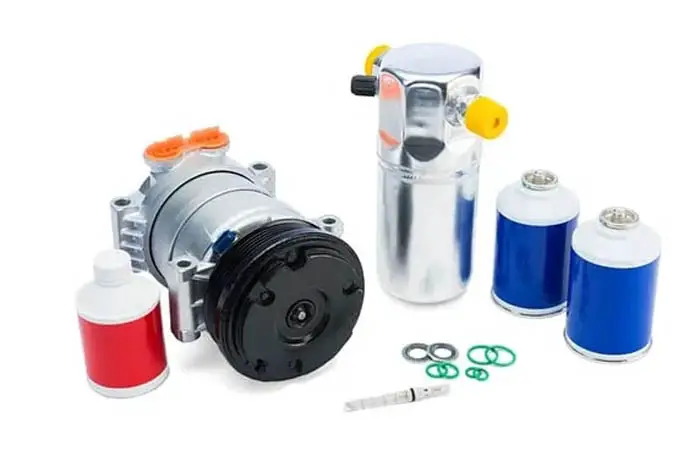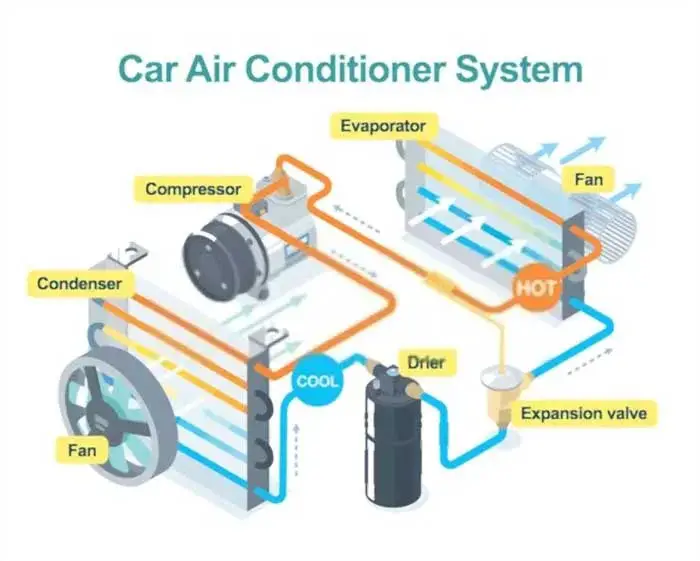
In the United States, the car air conditioner is a necessity for every car during the hot summer months. Many passengers do not know how their air conditioner works and take it for granted. This article will explain the basic principles of how automotive air conditioning works. By understanding how the ac works, you can appreciate the engineering that goes into making this life-saving device.
Air conditioners made life easier and more comfortable for car occupants. It doesn’t create cool air it moves heat out of the system which creates cooling. To use the AC in an optimum way, you should have a good understanding of how car A/C works.
In this powerful guide, you will learn comprehensively how car air conditioning units work, and the scientific principles which cool the refrigerant, and condensation, explained in easy words.
Related Post: 7 Basic Parts of Car AC System
How Car Air Conditioning Works
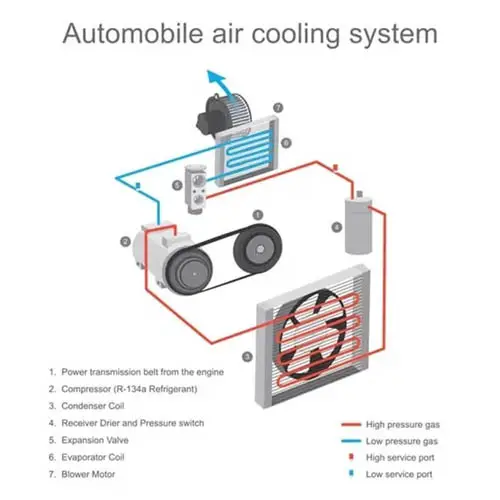
The working principle of the car’s ac system is based on evaporation and condensation. The condensed refrigerant, when changes its state to vapor refrigerant, produce cooling by taking the heat from the surrounding. In other words, the car AC system works on the principle that liquid absorbs heat when they become vapors.
When the refrigerant enters the compressor it is pressurized into a high-pressure, high-temperature refrigerant, which is passed through the condenser where it is converted to a liquid state means condensation occurs. Since the compressor cannot compress the liquid therefore it must be in gaseous form. The condensed refrigerant is drawn through an expansion valve/orifice tube where it is converted to low-pressure gaseous form means evaporation occurs.
The car A/C system recycles the refrigerant by converting it from liquid to vapor and vapor to liquid again, and in the end, you receive cold air in the cabin of the car. The ac in your car is divided into two pressure sides, the low-pressure and high-pressure sides.
To know further, you must read the complete detail of how car AC works. It is the ultimate guide you will ever come across on the internet. I hope you will enjoy it.
High-Pressure Side
Stage 1. Starting From The Compressor
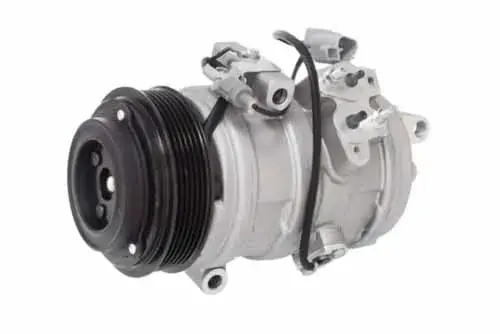
As you know the compressor is the king of the auto ac system. The Compressor is a pump driven by a belt attached to the engine’s crankshaft. The compressor is part of the system that initiates the car AC system functioning process. And remember one more thing, the compressor increases the pressure of the refrigerant
The refrigerant is drawn into the compressor from the evaporator of a low-pressure pipe and compresses the vapor refrigerant into a high-pressure, high-temperature refrigerant. Then refrigerant enters the condenser for cooling purposes. Indeed, this refrigerant that is leaving the compressor is still in a vapor state but at high-pressure and high temperature.
Related Post: 5 Kinds Of Car AC Noises
Stage 2. Refrigerant Passes Through Condenser
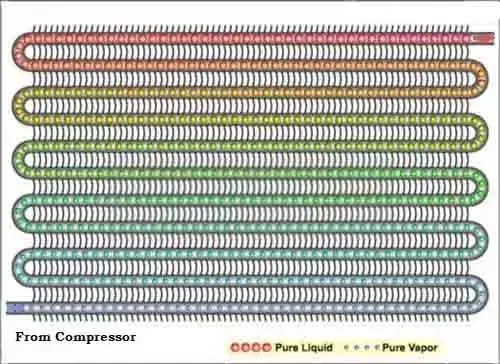
AC condenser acts as an important component in the AC system, which condenses the vapor refrigerant into liquid refrigerant by dissipating heat from it. The high-pressure, high-temperature gas from the compressor is passed through a series of tubes in the condenser.
The condenser creates heat removal mechanism from the refrigerant by drawing ambient air across the tubes of the condenser through a condenser cooling or radiator fan and making the refrigerant cool. As enough heat is removed, the condenser condenses the vapor refrigerant and converts it into a liquid state means condensation occurs.
The Science Behind Condensation:-

The conversion of gas to liquid is called Condensation. From a scientific point of view, condensation is an exothermic process that means ”heat out or warming process”. In other words, when condensation happens heat will be produced.
The exothermic process involves ”loss of heat”. Whenever gas converts to liquid, heat will be released into the system. For example, when you drink a glass of cold water, the water vapors accumulate on the outer surface of the glass. This is because the moisture from the air collides with the outer surface of the glass.
These water vapors give out their heat energy to the glass making the glass a little warmer. As the glass is cool, it absorbs the heat from the vapors and converts it into a water droplet. Therefore water droplets accumulate outside of the glass.
Similarly, when a compressor compresses the vapor refrigerant and sends it to the condenser. The refrigerant will lose heat while passing through the coil of tubes and fins in the condenser and converts it from vapor to liquid state. Hence, condensation happens.?
When a gaseous refrigerant is compressed. It releases kinetic energy stored in molecules bond required to become liquid.
Stage 3. Refrigerant Is Filtered Via Receiver Drier
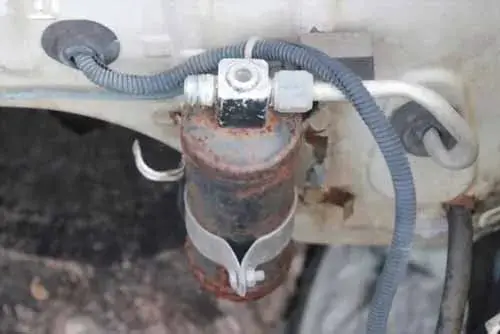
A receiver drier/accumulator is also a very important element in car AC working. It filters the debris and absorbs water in the system by filtering refrigerant gas. If they are allowed to remain in the system, they can damage the compressor and evaporator. At this stage, the liquid refrigerant, which comes from the condenser, moves into the receiver drier/accumulator for the purpose of removing impurities and debris which entered the system.
The receiver drier/accumulator consists of a desiccant and filter. Which filters the metal particles and moisture from the refrigerant and makes it clean.
This is an Info
Note:- Receiver drier and accumulator have the same purpose but they are placed in different locations.
Low-Pressure Side
Stage 4. Reducing Pressure By Expansion Valve
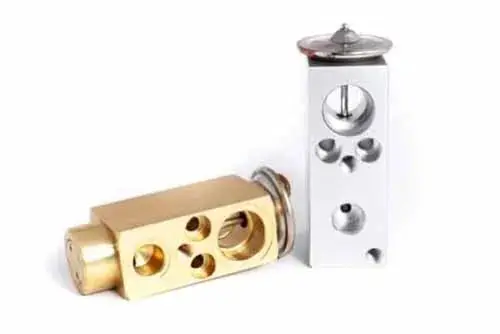
The expansion valve/ orifice tube is a must-have part of the A/C system. High-pressure liquid refrigerant flows through the evaporator and creates a cooling effect by converting it into vapor refrigerant. It is responsible for the flow of refrigerant from the high-pressure side to the low-pressure side.
Now, at this stage, the cleaned liquid refrigerant, which comes from the receiver-drier, passes into the expansion valve/orifice tube. Evaporation occurs when pressure changes from the high-pressure side to low pressure side with a decrease in temperature.
Stage 5. Refrigerant Travels Through Evaporator
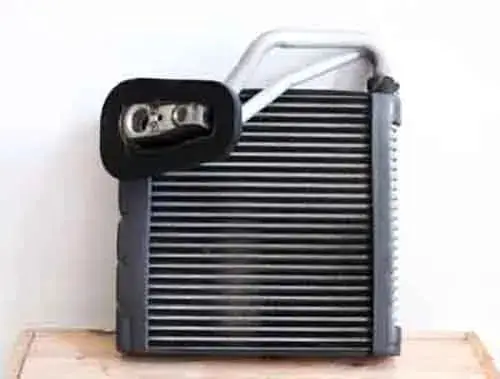
The evaporator is a crucial part of the car AC system working. It is a component where the liquid refrigerant converts to vapor refrigerant and evaporation happens.
At this time, the cooled vapor state of the refrigerant, which comes from the expansion valve/orifice tube, reaches the evaporator. The refrigerant enters the evaporator coil as a cold substance (has a low boiling point) after passing through the expansion valve. Blower motors work behind the ac vents to cool air from where it is drawn into the passenger compartment of the car. The cabin’s hot air heat is removed and transferred to AC refrigerant by air flowing around the evaporator, hence the cabin air is cooled and humidity out of the air is also removed.
Related Post: 3 Types Of Car AC Refrigerant
Stage 6. Refrigerant Circulates Back To Compressor
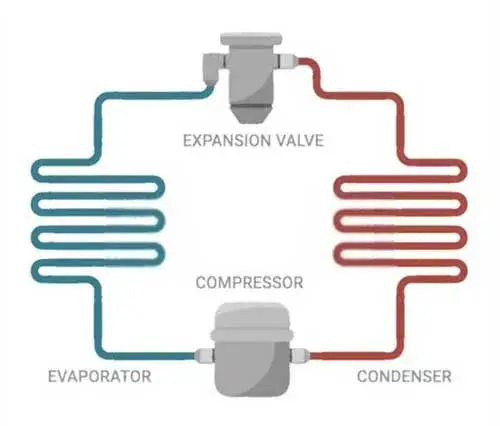
Now at the final stage, the low-pressure, low-temperature vapor refrigerant, which comes from the evaporator, circulates back towards the compressor. And gets compressed back into a high-pressure, high-temperature vapor refrigerant because the evaporator and the compressor are mechanically attached to each other.
And a New Cycle Starts Again.
In short, ac of the car works like the room’s ac. And have the same working principle as a car air conditioning system for cooling the internal air of a car cabin or house by removing heat through these six components such as compressor, condenser, receiver drier, expansion valve, and evaporator.
Related Post: Types Of Compressor Oil
The Science Behind The Cooling Effect Of Refrigerant
Cooling happens in refrigerants for two reasons.
- Evaporation
- Pressure Drop
1. Evaporation:

Liquid converting to vapor is called evaporation. Evaporation is an endothermic process that means the “heat (in) absorber or cooling” process. Didn’t get the point, let me elaborate,
Liquid requires energy to break the bonds between molecules to change to vapor. When a liquid converts to vapor it absorbs heat from the surrounding area and makes the surrounding area cooler. You can notice the cooling effect of evaporation when you put the water on your face and stand in front of the fan (the fan increases the evaporation rate).
So, you can feel the coolness. Indeed, water absorbs the heat from your skin, converts to vapors, and makes you cool. You can also feel the cooling effect of evaporation when a barber spays water on you while cutting the hair.
2. Pressure Drop:

In simple words, I want to make you understand. When the air is compressed it gets hotter and when the air is expanded it gets cooler.
And remember that every air molecule has energy and the number of air molecules is directly proportional to temperature. When the air is compressed a large number of air molecules come together in a unit area. Thus, increasing its pressure and temperature. A good example is the tire valve temperature.
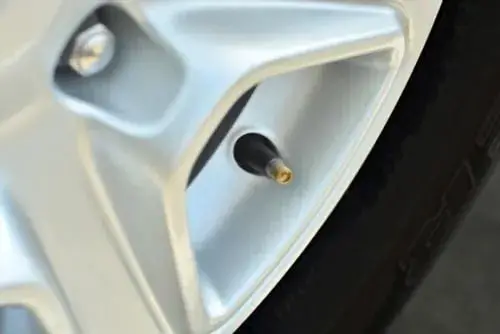
You can feel the tire valve temperature increase after putting air in it. Because a large number of air molecules are gathered in a small area, which increases its pressure and also its temperature. Also, when the air is allowed to expand It gets colder because a lower number of air molecules are present in the unit area which decreases its pressure and temperature.
Take, for example, mountains are cooler than plains. Because in high elevation the pressure decreases due to lower gravitational force. Thus, a lower number of molecules are present in a unit area, which causes cooling. Similarly, in plains, the pressure is high due to high gravitational force. Therefore, a high number of molecules are present in a unit area, which causes hotness.
Related Post: Doing These Will Make Your Car AC Blow Twice As Cold
Conclusion
When a compressed refrigerant of high pressure goes through the expansion valve, two things happen. Firstly, liquid refrigerant is forced through small holes of the nozzle which converts refrigerant from liquid to vapor state, and evaporation occurs.

Secondly, the refrigerant pressure is reduced by allowing a little amount of refrigerant comparatively to a large area of the evaporator. Hence, these two factors contribute to coolness in the refrigerant.
FAQs
The main purpose of the expansion valve is to reduce the pressure of refrigerant by converting it to a low-pressure refrigerant from a high-pressure refrigerant.
When refrigerant leaks occur, they can have a negative effect on the environment by releasing the refrigerant into the atmosphere. The chemical reactivity of the refrigerant can have an adverse impact on climate change, as most refrigerants are potent greenhouse gases. The impact of these leaks can be reduced by using natural refrigerants, which have a much lower global warming potential.
The average life of valves in air conditioning systems can vary depending on several factors such as the quality of the valve, the frequency of use, and the operating conditions. In general, valves in air conditioning systems can last between 5-15 years. However, it’s not uncommon for valves to last 20 years or more with proper maintenance and regular servicing.
Sign Up

